Description
*Limited purchase of one box per customer until late fall.
Common Uses: In Russian Clinical Trials patients instilled 2 drops of soothing 1% N-acetylcarnosine Can-C eye drops into each eye two times a day, for a period of 6 months. The effective rate was 100%, setting an unprecedented benchmark for the treatment and reversal of cataracts and other eye disorders.
Can-C is used in the treatment of a range of ophthalmic disorders that have a component of oxidative stress in their pathogenesis including cataract, glaucoma, dry eye, vitreous floaters, inflammatory disorders, and corneal, retinal and systemic diseases such as diabetes.
The following vision improvements were reported in clinical trials and were further confirmed by our customers:
After two months (3 boxes) – Initial vision improvements had begun!
After three months (4 boxes) – Notable improvements in glare and distance vision!
After four months (6 boxes) – More dramatic vision improvements!
After six months (8 boxes) – Vision tests further validated vision improvements!
Note: After 6 months optimal N-acetyl-carnosine levels have been re-established in the eye at which time a reduction in use to half the recommended amount provides ongoing support for continued vision improvement at half the cost!
Instructions/How to Use:
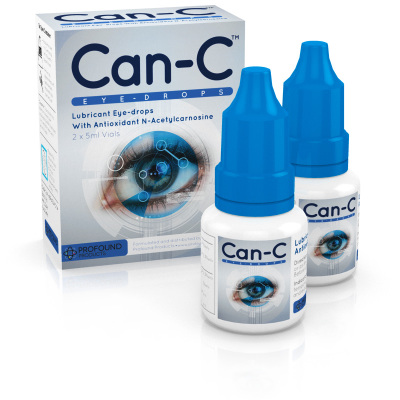 Can-C Ingredients and Instructions
Can-C Ingredients and Instructions
“N-acetylcarnosine (Can-C™) Eye Drops – Approved by Innovative Vision Products”
Can-C
Can-C™ Eye Drops
Two (5ml) vials per box
Can-C™ is a proprietary form of N-acetylcarnosine, a highly specific intraocular released form of carnosine which acts as both a stabilizer and carrier for safe delivery into the aqueous humor of the eye. Once delivered into the aqueous humor this bio-identical molecule becomes highly active in the reduction of free radicals, oxidative stress and lens glycosylation.
Can-C™ Ingredients:
N-Acetyl-Carnosine (NAC) 1.0% (approved by IVP)
Glycerin (lubricant) 1.0%
Carboxymethylcellulose sodium (lubricant) 0.3%
Excipients:
Sterile Water (Ophthalmic Grade Isotonic Solution, pH 6.3 to 6.5)
Buffers: Potassium Bicarbonate and Boric Acid
Purified Benzyl Alcohol (Preservative) 0.3%
Dosage: Apply 4 drops daily to each affected eye.
Each carton of Can-C™ contains two (5ml vials) and each 5ml vial contains approximately 65-drops. Applying two drops to each eye, morning and evening, one box of Can-C™ will last approximately three weeks. (NOTE: Will last 6 weeks if treating one eye)
(3 week supply) for both eyes = 1 box
(2 month supply) for both eyes = 3 boxes
(4 month supply) for both eyes = 6 boxes
(6 month supply) for both eyes = 8 boxes
- Eye Drop Installation Instructions:
- Wash your hands with soap and water.
- Look toward the ceiling with both eyes open.
- Pull lower lid down with one hand to enlarge the opening.
- Hold bottle in other hand and turn directly upside down. Then carefully line up with the eye.

- Gently squeeze to instill “one drop” then gently close the eye for 60 seconds. The tip of the vial should never touch the eye.
- Wait 5 – 10 minutes or even an hour or more between applications to the same eye to prevent overflow of the product and to ensure maximum benefit.
- For cataract, apply a total of 4 drops daily to each affected eye. For general health improvement apply 2 drops daily to each eye.
Storage: Keep in cool dry environment and do not expose to extreme temperatures. All open vials should be discarded after 30 days.
FAQ and Instructions for Use
Can-C™ is for Pets Too!
Our Customer Testimonials!
How Can-C™ actually Reverses Cataracts!
Can-C™is Manufactured in a GMP (Good Manufacturing Procedures) certified, pharmaceutical facility which meets ISO 9001:2000 and ISO 13485:2003 standards for the design/formulation and manufacture of sterile contact lens solution and pharmaceutical solutions per FDA guidelines. Only the lubricants (Carboxymethylcellulose sodium) and (glycerin) are approved by the FDA for ophthalmic use, and can be listed as active ingredients on our label. Can-C™ is not FDA approved for the treatment of cataracts therefore N-Acetylcarnosine (1%) is listed as an inactive ingredient on the label.
Disclaimer: The above information is presented for educational purposes only and does not replace the advice of your physician.
Ingredients:
How & Why Can-C Reverses Cataracts
How does (Can-C™ N-Acetylcarnosine) actually work to reverse cataracts?
 canc-work_01It is now known that cataracts are the result of elevating levels of “ascorbate oxidation” or oxidative stress due in part to oxygen free radicals in the eyes of humans and animals. This unchecked oxidation results in the cross linking of lens proteins, which is a slow glycosylation process. Cross linking of the lens proteins eventually causes a yellowing or browning pigmentation of the lens or (lens opacification) limiting the amount of light that reaches the retina, resulting in worsening vision.
canc-work_01It is now known that cataracts are the result of elevating levels of “ascorbate oxidation” or oxidative stress due in part to oxygen free radicals in the eyes of humans and animals. This unchecked oxidation results in the cross linking of lens proteins, which is a slow glycosylation process. Cross linking of the lens proteins eventually causes a yellowing or browning pigmentation of the lens or (lens opacification) limiting the amount of light that reaches the retina, resulting in worsening vision.
This degenerative process occurs and advances as the natural antioxidant supply in the eye diminishes. Critical antioxidant supplies are canc-work_02continually being tapped from the eye, for protection against; over exposure to ultraviolet light, against toxins and chemicals present in the air we breathe, the food we eat, against the hours we spend looking at  our computer screens, and so on.
our computer screens, and so on.
Researchers recently learned that the healthy eye contains high levels of the natural antioxidant carnosine. Interestingly the eyes of those suffering from degenerative ocular diseases such as cataracts were found to be grossly deficient in this essential ocular antioxidant.
The prime ingredient in Can-C™ is a proprietary form of N-acetylcarnosine, a highly specific intraocular released form of carnosine which acts as both a stabilizer and carrier for the di-peptide L-carnosine, safely delivering it into the aqueous humour of the eye, (the fluid area surrounding the lens). It is here, that the bio-identical antioxidant becomes most active in its ability to act as a natural and highly effective anti-oxidant. Important Note: Years of research were spent to identify a specific purity level of N-acetylcarnosine (NAC) that that would ensure both safety and optimal results. This purity level is highly proprietary and only the N-acetylcarnosine products with Dr. Babizhayevs’ approval should be applied to the eyes. Look for the following statement on the box of any N-acetylcarnosine eye drop product prior to applying to the eyes. “Aproved by Innovative Vision Products”. N-Acetylcarnosine (Can-C™) carries this statement on every box.
 Dr. Mark Babizhayev of Innovative Vision Products (IVP), also makes it quite clear that common L-carnosine if used in a non- approved n-acetylcarnosine formulation will not be of much use in the treatment of senile-cataract. This is because there are many synthesized “carnosines” and their biological and medicinal activity strongly varies depending upon how and where they are sourced. For example, if carnosine is extracted from meat muscle substances, the biological and anti-oxidant activity is very low. This is presumably due to the contamination of the “pure” carnosine substance by heavy metal salts and proteins and other related impurities. It is very complicated to effectively purify carnosine chromatographically, as the compound chelates divalent metal ions very heavily and the biological and anti-oxidant activities can not be regenerated during the purification procedures. In conclusion, there were many forms of carnosine, which were abandoned, in the Russian studies because of their lack of anti-cataract and anti-oxidant ability in the human eye. However, Innovative Vision Products (IVP), in conjunction with their Japanese partner and manufacturer, have researched, developed and patented a highly specific purity factor of n-acetylcarnosine which has excellent biological activity and has been proven effective in controlled human lens studies. Only the Can-C™ formula was used in the clinical trials. click here
Dr. Mark Babizhayev of Innovative Vision Products (IVP), also makes it quite clear that common L-carnosine if used in a non- approved n-acetylcarnosine formulation will not be of much use in the treatment of senile-cataract. This is because there are many synthesized “carnosines” and their biological and medicinal activity strongly varies depending upon how and where they are sourced. For example, if carnosine is extracted from meat muscle substances, the biological and anti-oxidant activity is very low. This is presumably due to the contamination of the “pure” carnosine substance by heavy metal salts and proteins and other related impurities. It is very complicated to effectively purify carnosine chromatographically, as the compound chelates divalent metal ions very heavily and the biological and anti-oxidant activities can not be regenerated during the purification procedures. In conclusion, there were many forms of carnosine, which were abandoned, in the Russian studies because of their lack of anti-cataract and anti-oxidant ability in the human eye. However, Innovative Vision Products (IVP), in conjunction with their Japanese partner and manufacturer, have researched, developed and patented a highly specific purity factor of n-acetylcarnosine which has excellent biological activity and has been proven effective in controlled human lens studies. Only the Can-C™ formula was used in the clinical trials. click here
So what is the difference between Carnosine, L-Carnosine and N-acetylcarnosine?
There are different forms of carnosine; the best known is L-Carnosine and much has been published as to its impressive antioxidant and anti-aging benefits. N-acetylcarnosine which is a specific intraocular released form of carnosine is significantly different from L-carnosine although related. In addition to the proprietary, highly specific purity level of the n-acetylcarnosine that is used in Can-C™, the acetylation process is what makes n-acetyl-carnosinesuitable and stable in the eye. Unfortunately L-carnosine by itself, when applied topically, is easily broken down by a dipeptidase enzyme that is present in blood plasma known as carnosinase, and therefore is not deliverable into the aqueous humour of the eye. Furthermore, there are indications that a topical eye application of L-carnosine by itself may release the toxic compound, histamine, (which can severely promote oxidation reactions and therefore could cause other eye-problems with long-term use. This means that L-carnosine by itself is not suitable for eye-drop use as it is either ineffective, or could even be damaging to some tissues over time.
The acetylation component of IVP N-acetylcarnosine (Can-C™) makes it very stable and highly resistant to carnosinase. Additionally this stabilized compound protects against oxidative stress in the lipid phase of biological cellular membranes and in the aqueous environment by a gradual intraocular turnover into L-carnosinemaintaining a longer active therapeutic concentration of carnosine directly within the aqueous humour and the lens of the treated eye. Again the purity level of this particular n-acetylcarnosine is critical to its effectiveness.
(IVP) N-Acetylcarnosine Action(s):
Anti-glycation properties reverse cross lining of lens proteins.
Protects against oxidative stress both in the lipid phase of cellular membranes and in the aqueous environment.
Protects structural proteins of the lens/ alpha-crystalline, from the free-radical induced oxidation process.
Deliverable and stable at the cellular level.
Only logged in customers who have purchased this product may leave a review.
Related Products
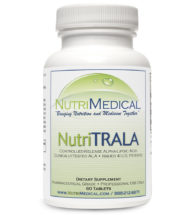
NUTRITRALA (Alpha-Lipoic Acid)
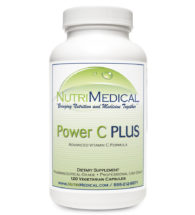
POWER C PLUS
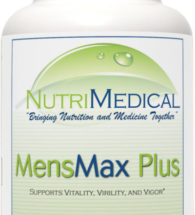

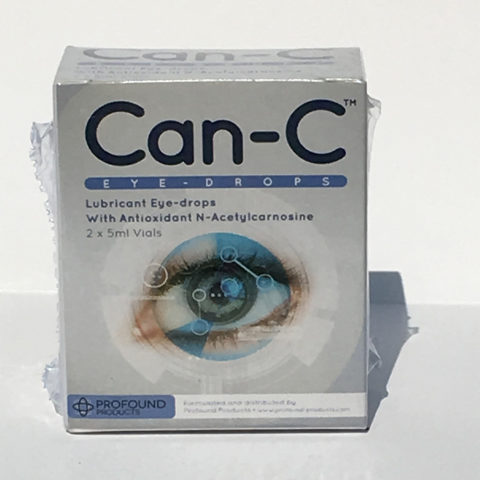
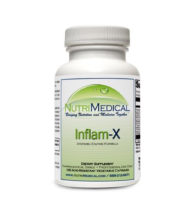
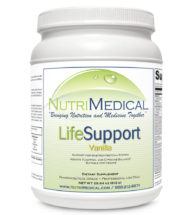
Reviews
There are no reviews yet.